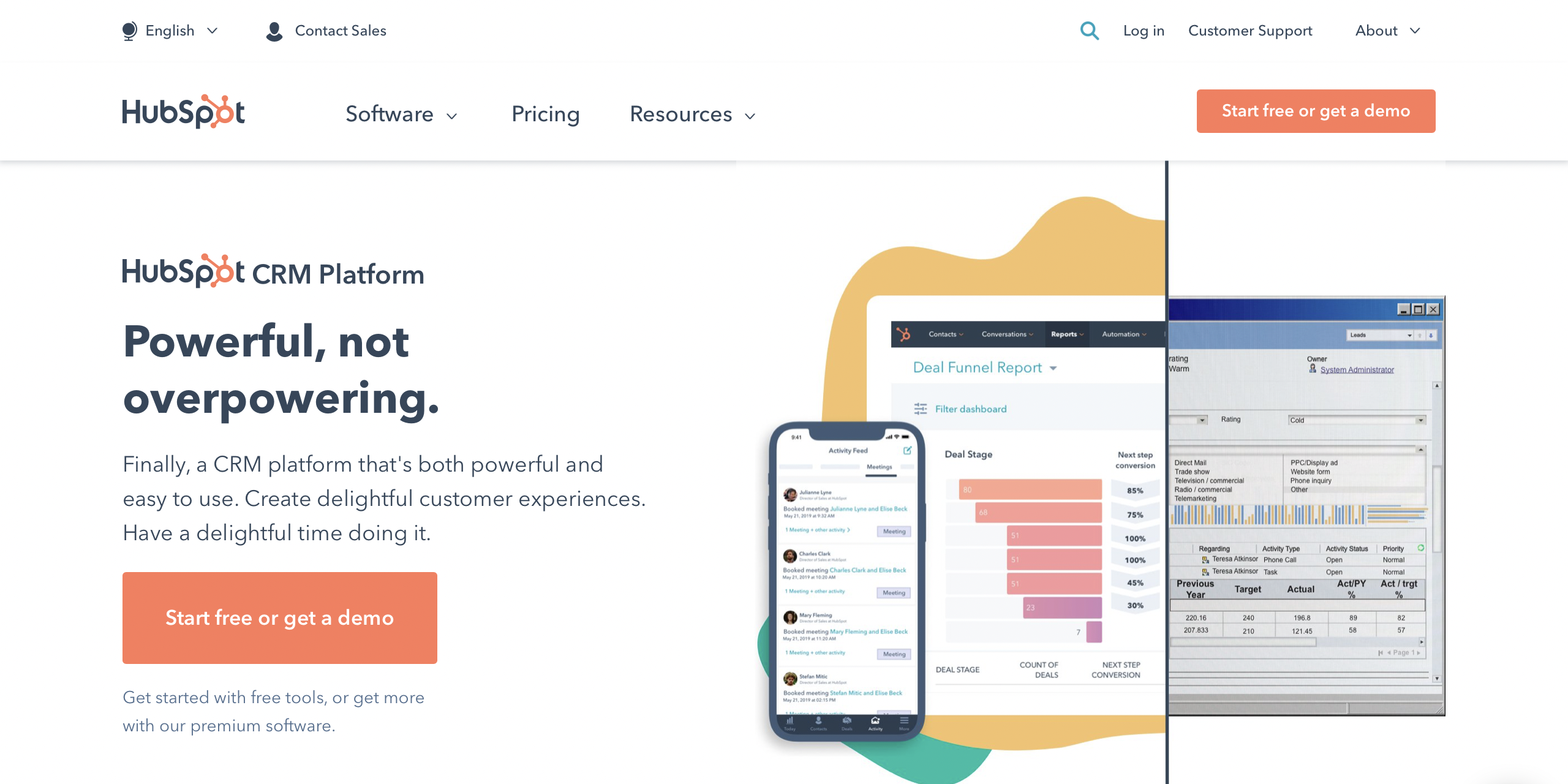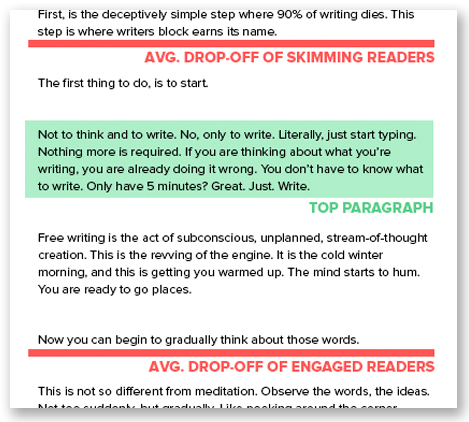DMZ guest blog by: Karina Barker, DMZ EiR
As one of the DMZ’s tactical EiRs, I get the incredible job of working with founders to help them amp up their copywriting. Not only do I offer strategic advice around brand positioning, voice, content, etc., I also get to roll up my sleeves and do the writing alongside the founders.
Over my time in this capacity, I’ve noticed several common questions emerge as startups work to articulate their value proposition. While their vision might be clear in their minds, crafting website copy that has customers sitting up and taking action can be more of a challenge.
With more than 16 years under my belt as a copywriter and communications specialist, I’ve written for every kind of organization, from government, to startups, to Fortune 500 companies. I’ve seen firsthand how small mistakes can limit your copy’s impact—and how some simple tweaks can make all the difference. Seriously!
Here are 4 tips you can use to take your website from good to great:
1. Nail your homepage headline and sub-headline
According to the Nielsen-Norman Group, users leave websites on average after about 10-20 seconds. That means you’ve got less than 10 seconds to make your value proposition clear and convince visitors to stay.
Your homepage headline and sub-headline are the first things visitors will see when they land on your page. That means these are your best shot to convince a visitor to stay (and hopefully convert).
One of the most common mistakes I see companies make is focusing their website on them.
A common format you’ll see is: We offer [this service] by doing [this thing]. Or, similarly: At [company], we help [this type of person] do [this thing].
But the goal of your website isn’t to share information about you. The goal of your website is to attract and convert customers. And that means you need to turn the spotlight on your customer —and talk about them.
Take a look at this homepage headline from Wealthsimple.

Image: Wealthsimple
They don’t say “We help you do money right.”
Instead the headline is direct and it implies “I’m going to do money right (with Wealthsimple’s help).” That subtle shift makes the reader see themselves in the headline.
The subheading then goes on to clearly articulate the actual “thing” that Wealthsimple offers (“powerful financial tools”) and the action-packed benefits that the customer can expect to derive (“grow and manage your money”).
While Wealthsimple makes it look easy, this kind of copy can take time and work (not to mention testing). If you don’t know where to start, a great first step is “voice of customer” research. Interview your customers, survey your product testers, read your online for views and search for the words your target audience uses to talk about benefits. This gives you a foundation to begin crafting and testing your headlines.
2. Don’t underestimate the power of social proof
Social proof is a powerful form of persuasion. When you include social proof in your webcopy, you tap into one of humanity’s deepest desires: to belong.
We all put a lot of value on what we see people we trust doing and supporting. When we’re trying to decide between all the different options out there, we look to see what other people are doing. In fact, 91% of consumers read reviews before making a purchasing decision.
If you’ve ever wondered why brands are willing to pay influencers big bucks for endorsements, this is it.
Here are some ideas for how to include social proof for businesses, even if you’re just getting started:
- List any awards or prizes that your business has received
- Share press/media/interviews covering your company
- Run a social media campaign (and offer incentives) to encourage users to rate or review your product
- Request reviews or testimonials from existing customers
- Create case studies based on real-life clients—or if you haven’t worked with any clients yet, craft use case studies that use a character that customers will identify with. (Note: always be clear if a study is based on a hypothetical rather than real world client.)
- Share logos of high-profile clients that you’ve worked with
- Share the number of users you’ve reached or clients you’ve served
Certain types of social proof will be worth more to certain audiences. Think about what can do to move the needle the most, and work towards collecting and presenting that type of social proof.
3. Keep your calls-to-action consistent
A call-to-action (CTA) is the moment when all of the work you’ve put into the rest of your copy gets put to the test. The CTA is where you encourage visitors to take your desired action.
In order to craft a successful CTA you need to:
- Know what you want a visitor to do. Sign up for a free trial? Subscribe to your newsletter? Book a call with your sales team?
- Make it stand out. Pick the right spot, colour, visuals to draw visitor’s eyes to your CTA.
- Be direct. CTAs are usually imperatives that begin with an action word. “Sign Up Now,” “Learn More,” “Start Your Free Trial.” Your CTA is not the place to get too wordy.
- Offer incentives. Make it easy for visitors to say yes by adding a line or two below your CTA: reassure visitors (e.g. cancel any time) or offer a desirable incentive (e.g. 10% of your first order)
- Create urgency. Make visitors take action while they’re on your site. Use time words (e.g. sign up now, grab your instant download) to create a sense of urgency or signal time constraints (e.g. limited time offer)
But one of the most common mistakes I see is a lack of consistency in your CTA copy. If you want visitors to follow through, your CTA must be crystal clear–and repeated over and over.
You can’t possibly miss Hubspot’s CTA. Not only is it in bright orange, it’s repeated word-for-word in their header and navigation bar. Even though their CTA is a little on the longer side, you know exactly what you’re supposed to do next (“Start free or get a demo”):

Image: Hubspot
In essence, when crafting your CTA, ask: What should the user do, and why? Your CTA should work in tandem with the rest of your webcopy to drive that message home. Inconsistent messaging (or multiple, competing CTAs in close proximity) can confuse your target audience or, worse, make them lose trust in your business.
4. Boost interest with a unique brand voice
Once you’ve nailed the technical copywriting pieces, you can take your website (and your brand) to the next level by honing your brand voice.
While it can seem daunting, developing your brand voice doesn’t have to be complicated. Here are some tips to get you started:
- Reflect your audience. Go back to customer profiles and reflect on the voice used by your ideal clients. Is your target audience young and sassy or mature and sophisticated?
- Name three characteristics of your ideal brand voice. Authoritative? Trustworthy? Quirky? Cool? Passionate? Informative? Pick three attributes that capture the essence of your business.
- Define the dos and don’ts of your brand voice. Once you have your three characteristics, you can get more detailed on how this translates to your copy. For example, if you pick “trustworthy” as one of your attributes, your dos and don’ts may include:
-
- Do: use honesty, direct language, be transparent, share mistakes, follow-through
- Don’t: push the hard sell, use jargon, over promise, trash talk competitors
As you grow, you can build out your brand voice into a document to share with anyone who is handling communications for your business. And remember, as you grow and change, your brand voice may develop too.


